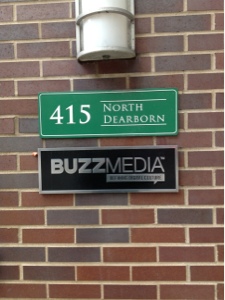Historically art in the West exists and has monetary value because our country has wealth and buyers who want to collect it. Recently buyers in China have been on the rise, along with a corresponding value on what “they” would perceive as art (i.e., Ming vases, and a lot of modern Chinese artists, as well). This article describes their growth:
Chinese spending on art remains robust in 2013. That’s despite a dip in the market last fall and an economic slowdown that recently knocked the Asian nation off its perch as the art world’s biggest spender and back behind the former perennial leader, the United States.
In a broader sense, there is a question of what drives art, and why some situations with incredible pathos don’t receive the attention they deserve (or much attention at all). For instance there are 1 million children who have been displaced or made into refugees in Syria due to their ongoing civil war. Can you imagine the stories, paintings, movies and television that this story would drive in the West? While we watch “reality” shows about dancing and singing and our “serious” fare covers meth dealers in New Mexico, why aren’t the amazing stories of war (and sometimes redemption, or bitter relapse) grist for “art”?
As I follow the Congo wars and civil wars, I am also amazed by the dearth of real or fictionalized accounts of either the war itself or its impact on civilians. There is little even though the scale of suffering and conflict is so wide, and the participants so varied.
For instance, imagine yourself as a writer in Syria or in the Congo. You have all the grist for art all around you. And yet… no one cares, because it doesn’t matter (much) to those that buy and produce art of all types, since they are in the West or part of the growing contingent in Asia.
It is interesting to me because artists and liberal arts types often view commerce with distaste, and act as if the world would somehow be better if we all dropped our focus on money and attended a play or modern dance or something like that. They believe that there is a “choice” and they can pursue their dreams, even though their dreams are subsidized and provided for by the wealth that is generated by the world of business, and protected by our force of arms, which they also despise.
Without wealth and military power (or the cover of someone else’s military power, as much of Europe and Asia shield under the US umbrella), art itself is a tiny, meaningless cry in the night. There is no intrinsic “value” in art unless the culture can support and (often) export it. Countries can support their own culture, as France and Italy work hard to do, but this is also tied to their value in the tourism trade and linked to their economic value as “open air museums” since little is actually manufactured or driven from these countries anymore. French literature, which made large impressions in the past (Sartre, etc…) is effectively invisible in the US today, although we’d gladly go visit and tour and drink wine and partake in the fabulous views.
Another facet of this phenomenon is the growth in “blockbuster” films that are populated with aliens, comic book figures, or supernatural events. These movies sell around the world, while indie-type movies (or even movies with relationships) are relegated to third class citizenship. If it can’t be explained or viewed in a generic manner understandable across cultures, then it isn’t wanted by our major studios. Certainly the Oscars don’t agree with this model, as they continue to hand out awards to movies that 99.999% of the world wide movie population doesn’t see, while ignoring the giant comic-book based movies taking over the screens. The “artists” there are being subsidized by the money-making tent-pole films, although the studios are extremely profit focused and at some point they won’t be be throwing those artists crumbs anymore (after all, they have to pay for expensive mansions and lavish lifestyles and the “cloak” of artistic merit is only worth so much).
Cross posted at LITGM
